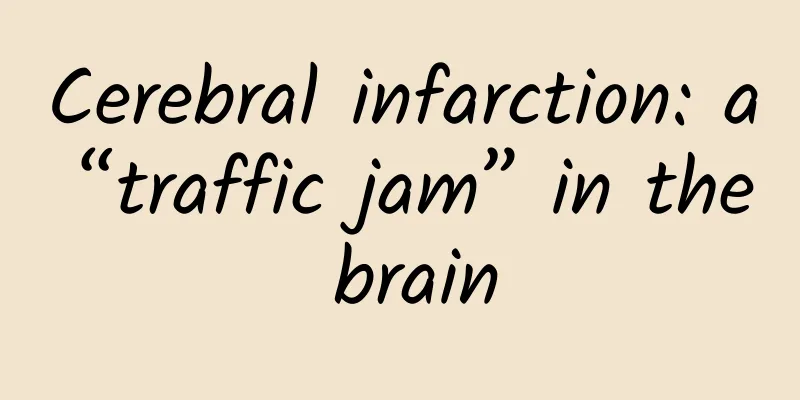Cerebral infarction: a “traffic jam” in the brain

|
Traffic jams are a headache in a busy city. But what if I tell you that there is also a "traffic jam" in your brain? Yes, this wonderful metaphor is exactly the topic we are going to discuss today - cerebral infarction. 1. What is cerebral infarction? Cerebral infarction, also known as ischemic stroke, occurs when the blood supply to a certain area of the brain is suddenly interrupted. This is like a "traffic jam" in the brain, causing the brain to not get enough oxygen and nutrients, which leads to the death of brain cells. 2. The “black hand” behind cerebral infarction The most common cause of cerebral infarction is the formation of blood clots. Blood clots are like "small stones" in the blood. They can roll in the blood vessels until they stop at a narrow place. Once the blood clot completely blocks the blood vessels, it will cause cerebral infarction. In addition, high blood pressure, high cholesterol, diabetes, smoking and obesity are all risk factors for cerebral infarction. 3. Symptoms of cerebral infarction Symptoms of cerebral infarction may vary from person to person, but common ones include sudden headache, dizziness, nausea, vomiting, slurred speech, weakness or numbness on one side of the face or body, blurred vision or loss of balance, etc. If these symptoms occur, you should seek medical attention immediately. 4. Prevention of cerebral infarction The key to preventing cerebral infarction is to control risk factors. This includes maintaining a healthy diet, exercising regularly, quitting smoking, and controlling blood pressure and blood sugar. In addition, for those who already have high blood pressure, high cholesterol and other diseases, it is also very important to take medication regularly and have regular checkups. 5. Interesting things about cerebral infarction Although stroke is a serious health problem, there are some interesting facts related to it. For example, did you know that the brain is actually very plastic, and even after a stroke, brain cells in other areas can take over some of the lost functions. It's like our brain has a set of "backup plans" to deal with emergencies. In addition, some studies have shown that learning new skills or languages can stimulate the brain to create new neural connections, which can help restore some lost functions after a stroke. So, even if you or your loved ones are experiencing a stroke, don't lose hope, keep learning and exercising, your brain may bring you surprises. 6. Creative methods of rehabilitation for cerebral infarction
VII. Conclusion Although cerebral infarction is a serious health problem, as long as we understand it, prevent it, and treat it correctly, we can minimize its impact on our lives. Let us work together to use scientific knowledge and creative methods to escort the "traffic" of the brain! |
<<: National Liver Care Day | Stay away from liver cancer and take care of your liver
>>: Subarachnoid hemorrhage: a "red meteor shower" in the brain
Recommend
Does Enoki Mushroom Increase Milk Production?
As a common vegetable, enoki mushrooms are loved ...
How to treat uterine erosion of degree 2?
Uterine erosion is a gynecological disease, which...
What material is Chow Tai Fook's pink cat's claw lucky beads made of? How much does Chow Tai Fook's pink cat's claw lucky beads pendant cost?
Chow Tai Fook's pink cat claw lucky beads are...
Reasons for delayed menstruation for two consecutive months
Under normal circumstances, women's menstruat...
What's wrong with women who keep going to the toilet to urinate?
Urinating is a very normal physiological activity...
How to lose weight with phlegm-damp constitution? Diet for weight loss
Phlegm-dampness constitution is one of the nine m...
The labia minora is too big and has fallen out
For girls, private parts are the most important p...
The best time to measure endometrial thickness
The normal endometrial thickness of women is gene...
Can I eat dragon fruit during my period?
Women during menstruation should pay attention to...
The latest mutant strain “Hellhound”, how contagious and lethal is it?
What exactly is Cerberus? This name is not offici...
10 Alarms of Fungus Living in the Vagina
Tight-fitting synthetic underwear has many disadv...
Does pregnancy cause stomach pain?
Pregnancy is the time when women need to pay the ...
Can mothers eat pears during the confinement period?
Giving birth is not only painful, but also consum...
Preventing the risks of orthokeratology lenses starts with details
In this digital age, myopia has become a problem ...









